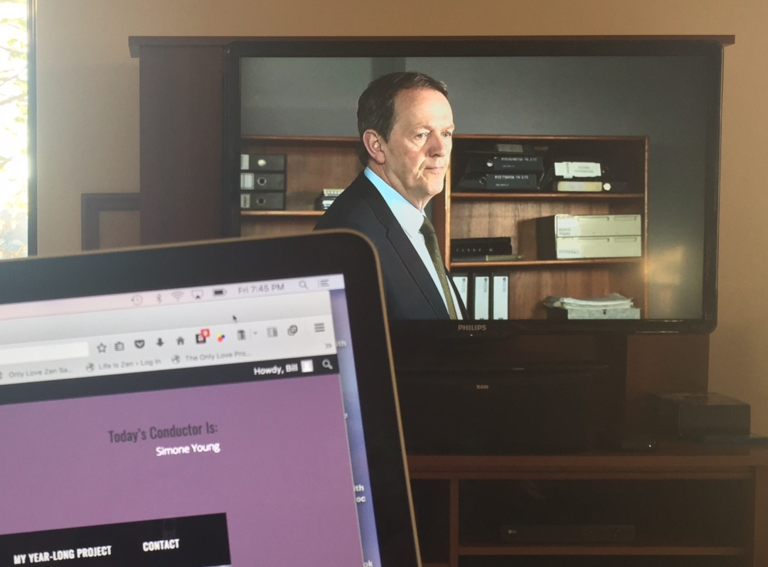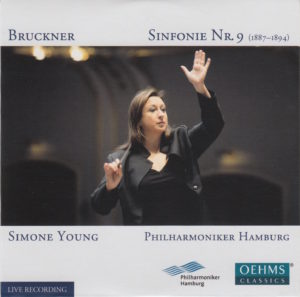
My listening spot this evening is in a La-Z-Boy recliner with Season 9 Episode 4 of the British TV series Inspector Lewis on in the background.
I’ve always been a sucker for British TV shows, especially mysteries (or police procedurals, as they’re usually called).
For the same reason I liked Inspector Lewis, I liked the show it came from, Inspector Morse: the characters are vivid, memorable. And the cases are cerebral, rather than bloody.
A few years ago, I discovered Prime Suspect, starring Helen Mirren, Ballykiss Angel, Agatha Christie’s Poirot, Doctor Who (of course), Doc Martin, The Office, Father Brown, Downton Abbey, and Sherlock, one of the greatest TV series of all time – until Steven Moffat ruined it.
There are a few others (Broadchurch, Whitechapel, et al) I also watch on occasion.
I like British TV. A lot. Hell, I’ll even watch Lark Rise to Candleford in a pinch.
If that doesn’t prove I like British TV, nothing will.
 Anyway, as I was watching the detective series this evening, and having an occasional spoonful of Ben & Jerry’s Pistachio Pistachio ice cream (the greatest ice cream on the planet…soon to be in my belly), I realized how I can fix the numbering problem I created for myself: Simply post two today. No need for a Day 64 or a Day 63 Bonus or whatever.
Anyway, as I was watching the detective series this evening, and having an occasional spoonful of Ben & Jerry’s Pistachio Pistachio ice cream (the greatest ice cream on the planet…soon to be in my belly), I realized how I can fix the numbering problem I created for myself: Simply post two today. No need for a Day 64 or a Day 63 Bonus or whatever.
Maybe I’m not so thick after all.
 As I sit here, I am listening to Anton Bruckner’s Symphony No. 9 in D Minor (WAB 109), interpreted by Australian conductor Simone Young (1961-).
As I sit here, I am listening to Anton Bruckner’s Symphony No. 9 in D Minor (WAB 109), interpreted by Australian conductor Simone Young (1961-).
Her orchestra is the Philharmoniker Hamburg.
I first encountered Maestro Young on Day 5, Symphony No. 1.
Then again on Day 10, Symphony No. 2.
Then again on Day 16, Symphony No. 3.
Then again on Day 24, Symphony No. 4.
And again on Day 32, Symphony No. 5.
And again on Day 40, Symphony No. 6.
And again on Day 48, Symphony No. 7.
And again, most recently, on Day 56, Symphony No. 8.
Today is the ninth – and last – time I’m listening to a performance conducted by Maestro Young.
From the splendid pdf liner notes written by Martin Stastnik that I downloaded from the OEHMS web site:
FAREWELL AND PRAISE OF GOD
Some Thoughts about Bruckner’s
Last SymphonyThe choice of key for this work was not by chance. Beethoven’s last symphony, also in D minor, was considered the non plus ultra of symphonic composition, not only for Bruckner but for all successors to the Bonn master. As we shall see later, Bruckner refers to Beethoven’s most monumental symphonic work not only in the key he chose, but also in its characteristic style and structure as well.
The references to Beethoven, however, cannot be so easily dismissed. Bruckner occupied himself most intensively with Beethoven’s work throughout his life.
The relationship between the beginnings of Bruckner’s and Beethoven’s respective Ninth Symphonies is so profound that chance or subconscious workings cannot come into question. Beethoven’s symphonic keystone formed the solid basis not only for Bruckner’s last work but also for almost his entire oevre. Bruckner himself referred a number of times to his fear of now having to compose a Ninth.
This legacy begins to lead a life of its own the moment it is performed for the first time. Bruckner’s last symphony cannot evade this fate, either. Even without the planned praise of God at the end, a conclusion as a farewell in peace and serenity – as was granted perhaps only to such a deeply religious person as Bruckner – will not be so very far removed from what the composer, truly devoted to his dedicatee, “the good Lord”, would have accepted.
The only way to get that pdf is to find it on the OEHMS web site. Good luck with that.
Or, you can read my earlier reviews of Simone Young.
Or, you can just click here.
You’re welcome.
Here are the objective aspects of today’s recording:
 Bruckner’s Symphony No. 9 in D Minor (WAB 109), composed 1887–1896
Bruckner’s Symphony No. 9 in D Minor (WAB 109), composed 1887–1896
Simone Young conducts
Young used the ???? version, edited by ????. No version or editor is listed in the CD booklet, on the CD sleeve, or in the pdf booklet I downloaded from the web site
Philharmoniker Hamburg plays
The symphony clocks in at 59:01
This was recorded in Hamburg, Germany, on October 25-27, 2014
Young was 53 when she conducted it
Bruckner was 72 when he died before finishing it
This recording was released on the OEHMS Classics label
Bruckner wrote his symphonies in four movements. He would have done so this time, as well, but he died before completing the Finale. The time breakdown of this one (Symphony No. 9 in D Minor), from this particular conductor (Young) and this particular orchestra (Philharmoniker Hamburg) is as follows:
I. Feierlich, misterioso………………………………………………………………………….24:32
II. Scherzo. Bewegt, lebhaft; Trio. Schnell………………………………………………………………………………………………….11:50
III. Adagio. Langsam, feierlich…………………………………………………………………………………………………22:36
IV. Finale……………………………………………………………………………………………….00:00
Total Time: 59:01
Okay. Now, here are the subjective aspects of today’s recording:
My Rating:
Recording quality: 3 (personal preference, not technical shortcomings)
Overall musicianship: 4
CD liner notes: 2 (meager notes, confusing layout, essentially an “ad” for the Hamburg State Councillor of Culture and the Hamburg Philharmonic)
How does this make me feel: 2
I wish the last symphony to which I listened, bringing my time with Bruckner to a close, wasn’t Simone Young’s.
The Misterioso didn’t grab me, which wasn’t a good sign.
The Scherzo was appropriately pizzicato-y and all that. But something about the second movement dragged. The syncopated da-da-da-da-da-da part seemed plodding, tired. I don’t know if that’s because the tempo was slower than, say, Barenboim’s, or if Young didn’t kick the orchestra in the ass (the way Celibidache did in the rehearsal tracks included with Symphony No. 9) and shout, “Tempo!” at them. Whatever it was, this suffered from a lack of energy. My favorite Scherzo! And it seemed to drag.
Overall, this recording sounds deep and cavernous, resonant. But the depth turns music that should be in my face into something that’s just out of my reach.
I realize that probably doesn’t make any sense to you. I’m not even sure it makes sense to me. But when something is recorded that way, it has the unenviable distinction of seeming too ponderous, aloof. I’m detached from it, rather than inside of it, the music all around me.
Oh, the Adagio. The ending doesn’t feel the same to me. The note played by the horn is too pronounced. It doesn’t sound wistful. It sounds triumphant.
Most (or even all) of the Adagios to the Ninth that I heard from these eight conductors seemed painfully sad at the end. It was the musical equivalent of a death, the spirit drifting heavenward.
Simone Young’s final minute of the Adagio didn’t sound like that all. I wasn’t leaning forward, on edge, hanging on every moment of those notes and pizzicato strings. The horn stood out in a distracting way, not blending with the strings.
So. There you have it.
Given the lack of liner notes, the lack of even rudimentary information about Bruckner or Young, and the performances that just didn’t grab me, I can’t recommend this performances, or this box set.
